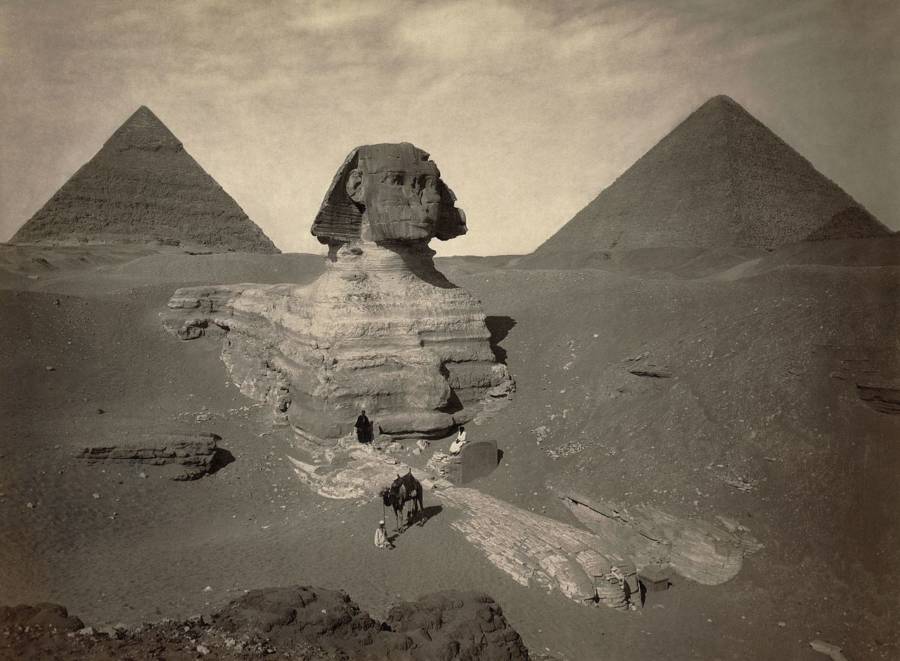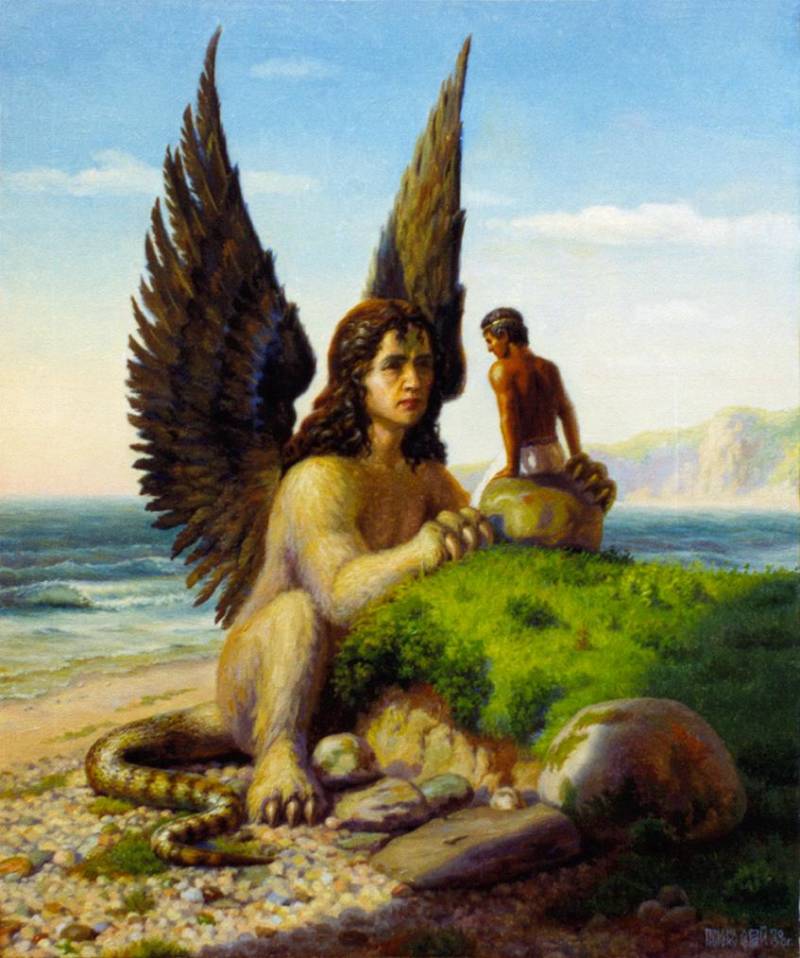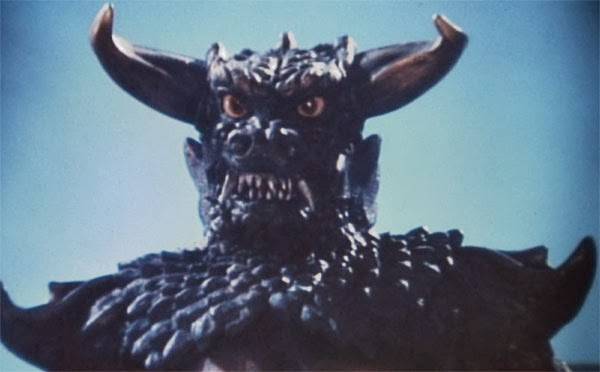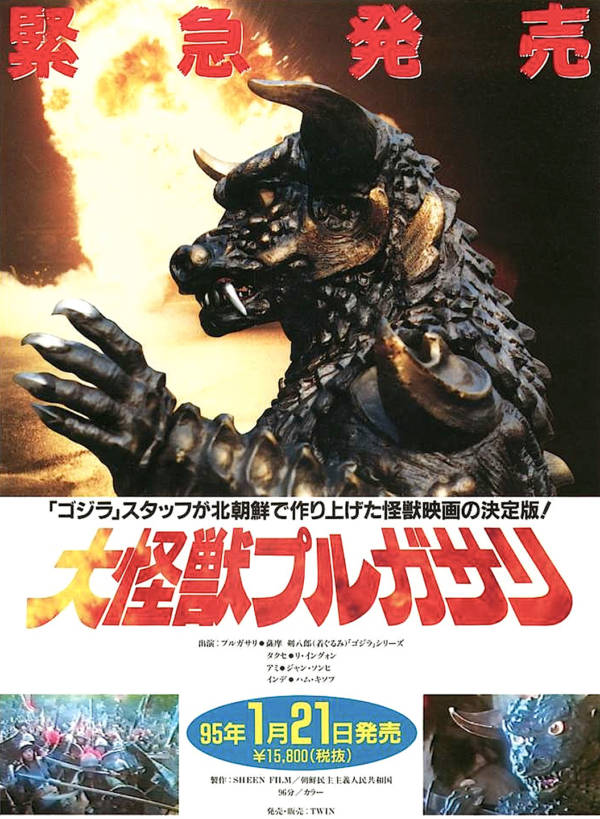Sphinx

Wikimedia CommonsThe Great Sphinx of Egypt. Circa 1867-1899.
The myth of the Sphinx is one of the oldest as some versions of its legends date as back as 9,500 B.C.
It’s best known, though, from the great statues of Egypt. There it is usually a lion with a man’s head, often adorned with a pharaoh’s crown. To the Egyptians, these mythological creatures were great and powerful beasts. Often their faces would be carved in the likeness of a king most likely as a way to show their rulers as half-lion, half-man deities.
When the Greeks adopted the idea of the Sphinx, though, they envisioned them as something evil. They gave them serpents’ tails and wings and believed them cruel, intelligent beasts that loved to toy with their victims before slaughtering them and devouring them whole.

Wikimedia CommonsOedipus and the Sphinx. 1992.
Today, the best-known story about these mythological creatures comes from the tale of Oedipus. On his journey to Thebes, Oedipus was accosted by a sphinx who asked him the famous riddle:
“What walks on four feet in the morning, two in the afternoon and three at night?”
She was so sure he would fail and so sure that she would get to kill him that when Oedipus correctly answered “Man” the Sphinx killed herself in despair. For the Sphinx, it was better to die than to live a life without torment.
It is not certain what exactly the Sphinx symbolizes. Some believe the Sphinx was to the Egyptians a talisman of great power and entryway into the afterlife. Perhaps combined with the Greek notion that the Sphinx could be defeated only by wit suggests that this mythological creature represents how humans try all the time to outsmart and escape death.
Mythical Animals: Pulgasari

Zsolt Dienes/YouTubeThe mythological creatuer Pulgasari, as he appears in the 1985 North Korean propaganda film.
North Korea has immortalized Pulgasari as the star of their greatest propaganda film. Under the orders of Kim Jong-Il, their government kidnapped two Korean directors to make the film, a Godzilla-like monster movie with a communist message.
In the original legend, Pulgasari was created by a Buddhist monk. When an evil governor ordered every Buddhist monk be sent to prison, he hid in his sister’s wall closet. To pass the time in hiding, he made a little creature out of steamed rice grains. To his shock, it came to life; and seeing it hungry, the kindly monk fed it the only thing he could find: steel needles.

Wikimedia CommonsThe poster for the North Korean propaganda film Pulgasari, released in 1985.
Pulgasari grew with every needle he ate. Soon, he was larger than the building itself but still hungry and still devouring every piece of metal he could find. He terrorized the city. His misshapen, monstrous body, it’s said, looked like a gigantic, stretched-out bear, its ears and nose flopping down like an elephant’s. Sharp, pointed needles poked through every inch of his skin.
The army moved to destroy it but no sword and no number of arrows could stop this monster. They dubbed it “不可杀”, or “bu ke sha” – Chinese for “can’t be killed”. In time, that name evolved into Bulgasal and, eventually, Pulgasari.
Desperate, the evil governor had his men set the great monster on fire – even then it didn’t die. The beast simply ran around, his body aflame, and ignited everything he touched until the city had been destroyed.
Pulgasari, though, isn’t just a creation of the North Korean propaganda team. He’s one of the classic mythological creatures from the annals of Korean history — one that, ironically, warns against the dangers of corrupt totalitarians.
After this look at these mythological creatures, read about the craziest mythological gods. Then, explore these real-life ocean creatures that are absolutely stranger than fiction.





